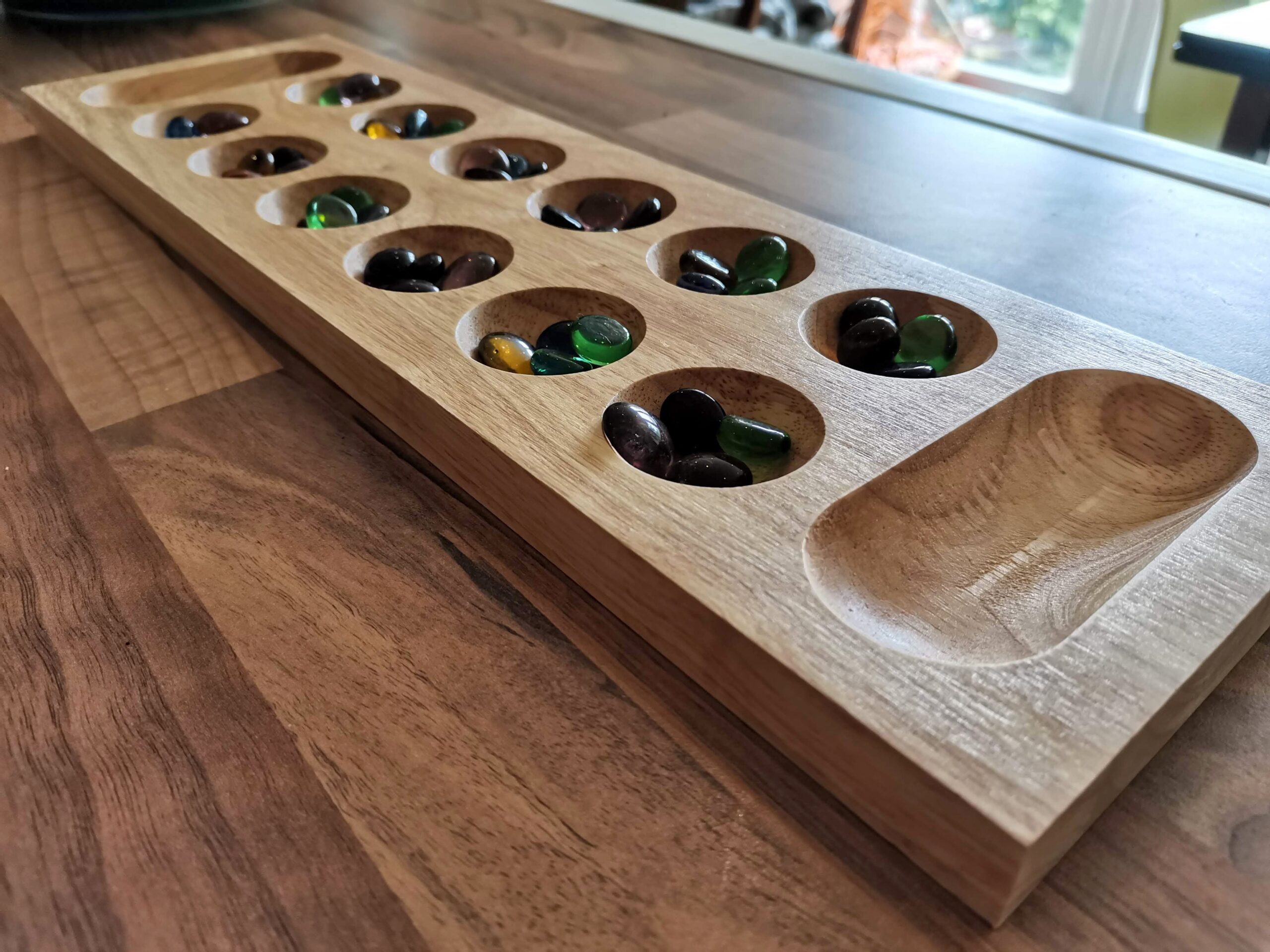Solo Modes In Board Games – Part Two (Automa)
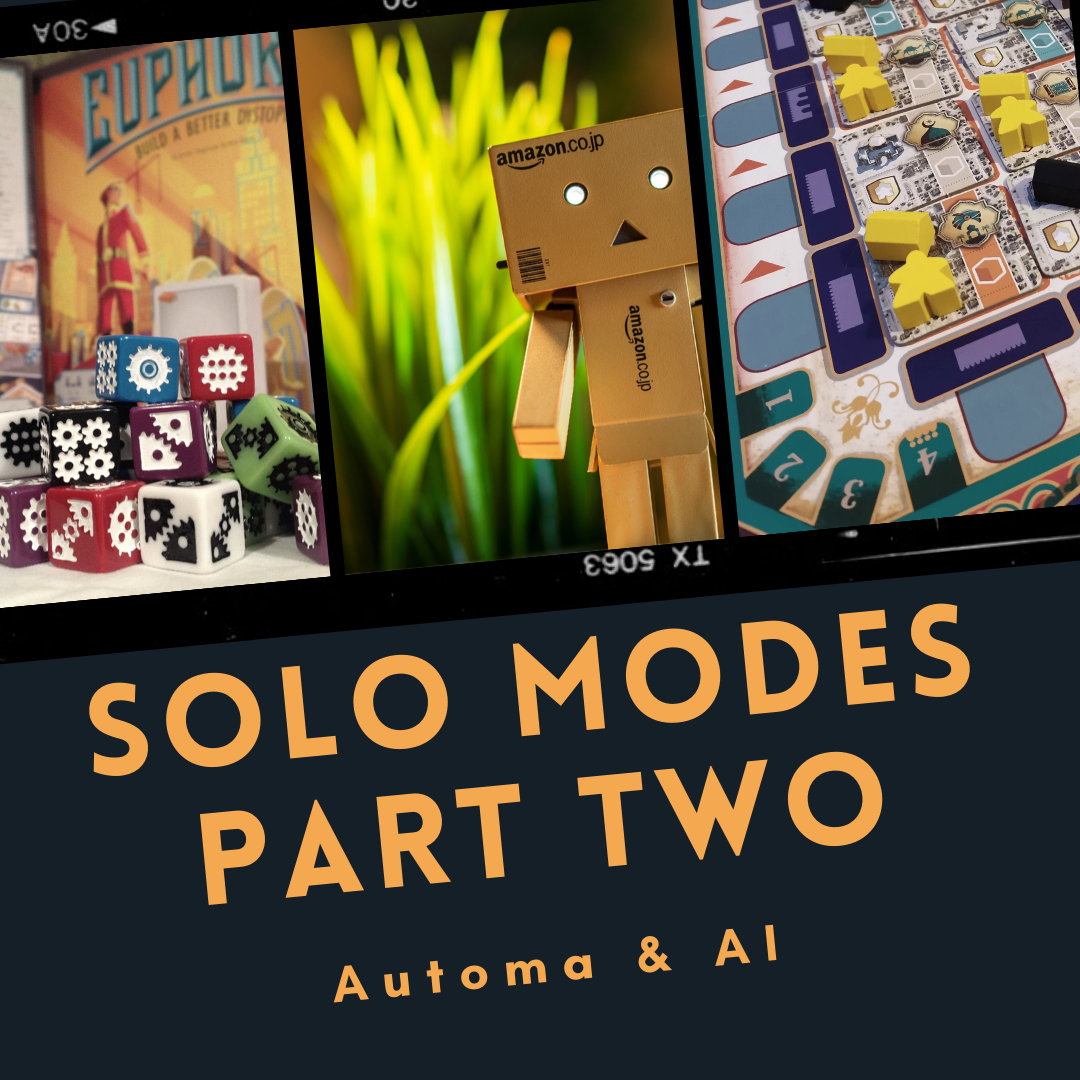
Last time, I took a look at the various ‘beat your own score’ variants available in board games. This time, I’m taking a bit of a deep dive into the world of automa, or AI opponents, in games.
What is an automa?
Let’s start at the beginning. What is an automa? You might have seen the term thrown about a lot in the last year or so, as the pandemic forced people to search for solo options. An automa is a simulated opponent for a board game, who the player controls, usually with a deck of cards. The term was coined by the famous automa designer, Morten Monrad Pedersen. While working on the solo mode for Viticulture (a wine-making game set in Italy), someone suggested the name ‘automa’, the Italian word for automaton. The name stuck, and he founded the Automa Factory, a company that board game developers can contract to create solo modes for their games.

Sometimes you’ll hear these solo opponents referred to as AI. Although it means largely the same thing, there’s a small, but subtle difference. In my opinion anyway. An automa tends to be an opponent who doesn’t need, or use, things like resources in games. Their actions more often instruct the player to give the automa some kind of reward from the game (e.g. give place a building on their behalf), but not by collecting and spending the resources. Instead, through clever playtesting, the rate the automa takes these thing to compete with, or impede the human, roughly mirrors a real opponent. AI opponents on the other hand, usually collect and spend resources, just like a real person. It’s a subtle, but important difference.
Automated opponents – What are your options?
Let’s start this off with looking at three of the best automated opponents, and their designers.
Automa Factory
I’ve already mentioned Automa Factory above, so let’s start there. The majority of the titles they’ve worked on are for Stonemaier Games. Automa Factory games work with a deck of cards that are split into two halves. By matching the right-side of the left card to the left-side of the right card when the two are placed side by side, you’re given a prioritised list of things to do. If the automa can do the first thing, do that, if not, read the next one down, and so on. Other parts of the cards often give you other things to do at the end of a round, or symbols may tell you when the automa passes, ready for the next round. For the next turn, the card on the left slides over the one on the right to replace it, and a new one is dealt next to it. Simple.
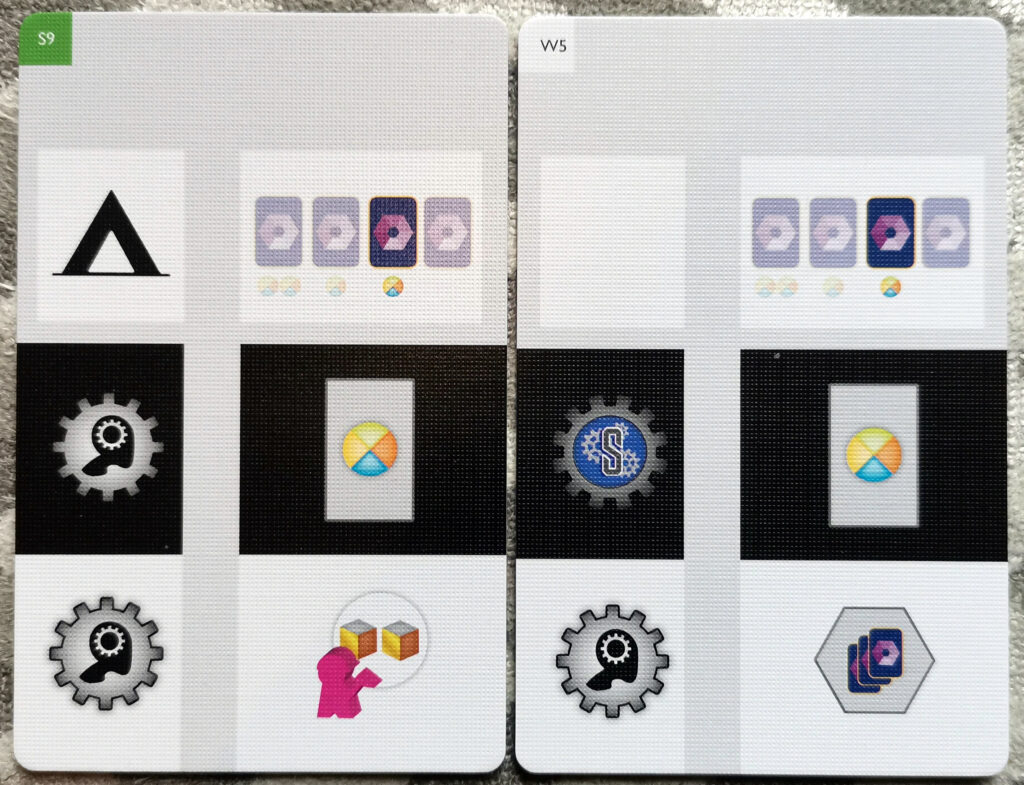
Automa Factory games are really easy to run, with very little fuss. I don’t think I could pick a single recommendation, because a lot of it comes down to the theme of the game you want to play. If you want a traditional ‘turn one thing into another thing’ euro, go for Viticulture: Essential Edition. If you want something with a bit more theme, look to the smash hit, alternate history, Euro-in-mechs-clothing Scythe. And if you want something a bit ‘friendlier’ on the table, check out the bird-attracting, tableau-building, eggcellent (sorry) Wingspan. My own personal favourite Automa Factory game is Gaia Project, which is a fantastic game of space exploration and empire-building which I really need to review (note to self).
The Automa Factory games provide a really good opponent, and the scores, turns and interactions really duplicate the feel of playing against a human. It’s already at the stage where spotting their logo on a game is almost a guarantee of a good solo version.
Garphill Games
In a lot of Garphill games there’s a solo mode, and more often than not, it’s against an excellent automated opponent. The West Kingdom games in particular, really manage to capture the feel of playing against a human opponent. Shem and Sam work together in an iterative process to refine the solo mode, until we get the finished product in the box. I’ve made no secret of the fact that I love both Paladins of the West Kingdom and Viscounts of the West Kingdom. Solo play in these games is similar to Automa Factory, in as much as the opponent’s actions are determined by flipping a card. Things get more clever from here though.
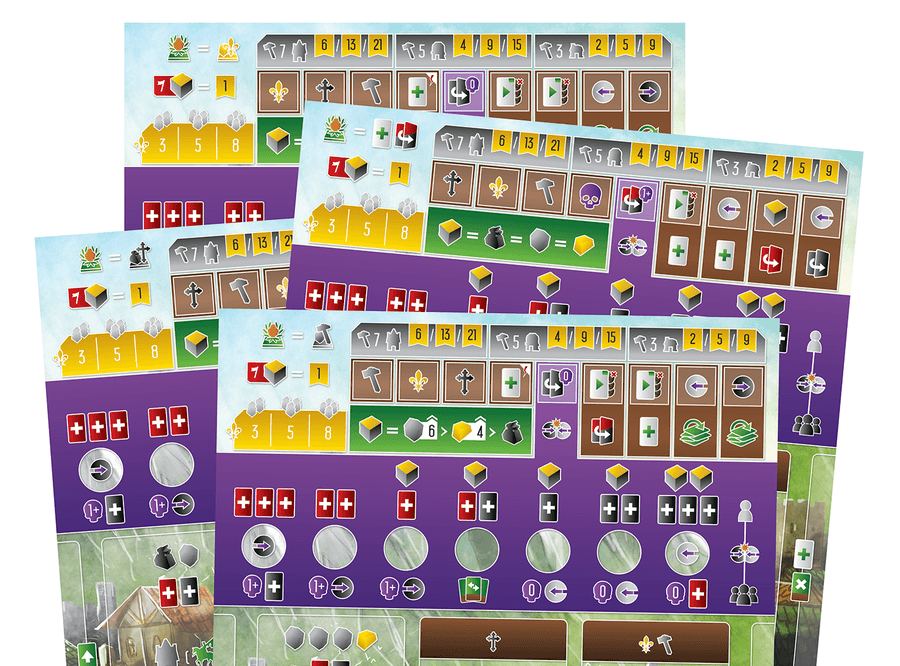
Both of those games use one of the player boards, flipped over, for the special AI modes. Paladins gives three different setups, for easy, medium and hard difficulty levels, which is great. Viscounts on the other hand, has four different AI boards, each of which concentrates its efforts on one of the main scoring mechanisms in the game. It really feels like playing against different personalities. It also has to collect and spend resources, just like I do, and this makes things feel fair. I’m not too proud to admit I’ve had a few ‘Ha! Screw you!” moments when the AI hasn’t been able to afford something really good.
The scores are comparable to playing against a person, and the gameplay feels like playing against someone. Importantly, they are very easy to run. Once you’ve played against them once, you won’t need the rule book to play solo again. That’s especially important in a game as heavy as these, as you need your brain to work out what the heck you’re going to do, never mind running a complex opponent too.
Dávid Turczi
Dávid’s been brought in to create solo modes in a lot of different games over the years, as well as creating a few games that are completely of his own design. I’ve covered one of each of these, in my Teotihuacan and Tawantinsuyu reviews, respectively. His solo designs are unique, and I really like how they work.
If we take a look at Anachrony and Tawatinsuyu (both completely his own design), the opponents really are AIs. They even have names! In Anachrony you square-off against Chronobot (now being replaced with Chronossus in an expansion), and in Tawantinsuyu you fight for victory against Axomamma. In both, the AI has a custom player board, numbered tokens, and a special die. You roll the die, find the numbered token that matches, carry out the action, and then move the token along. In both games though, the AI needs to gain and spend the resources to carry out its actions. It’s a really clever way of running things, and shows how much work must go into development, balancing the mathematics of chance with the die rolls.
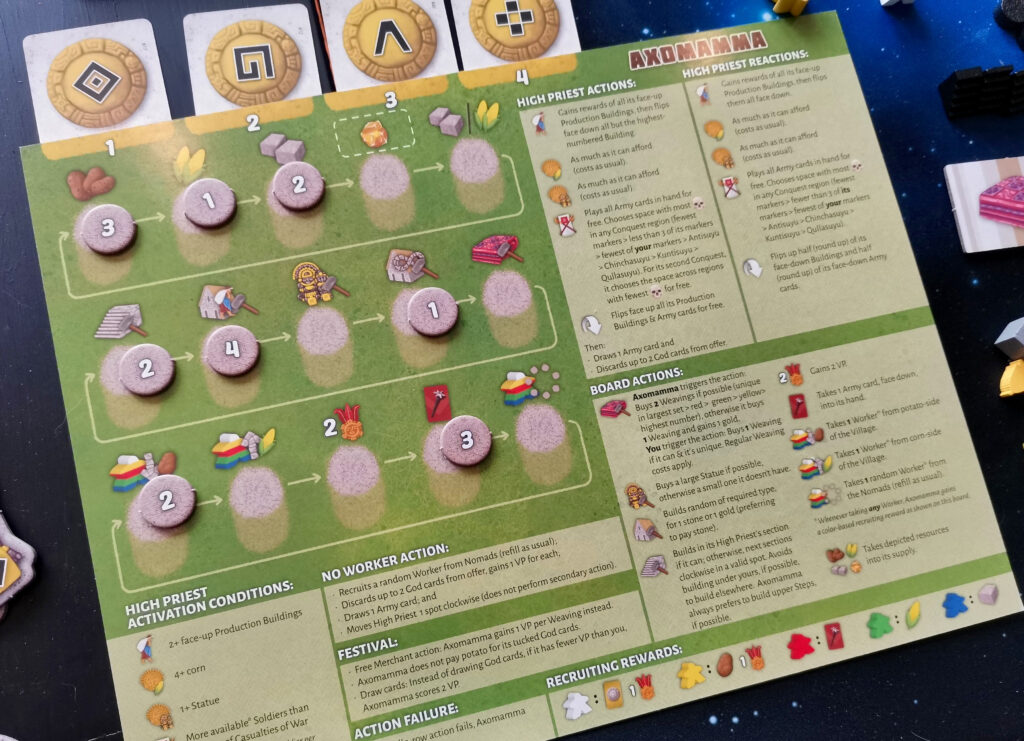
Both of those examples look far more intimidating when you first set them up, than they actually are to run. Thanks to clear rules and good iconography, you won’t need the rule book again to figure out what they’re doing. Much like with the Garphill Games, this is really important, as these games are heavy enough at the best of times.
Worth getting just to play by yourself?
If you’re asking about any of the games I mentioned above, then yes, absolutely. Every game I’ve mentioned so far is an excellent option for solo gamers, and I either have, or would, pay just to play them alone. The reasons the first two systems above work so well, is because although they make you step down through a series of priorities on each turn of a card, the actions are always easy to carry out. There’s very little in the way of calculation or deduction to do, so the automa’s turns pass quickly.
Things aren’t always so good though, and I think it’s worth highlighting what makes for a disappointing solo opponent, in my opinion. I’ve not played against an automated opponent yet that’s outright bad, but there’s one thing that can really sour things for me, and that’s making the automa’s turn take longer than mine.
The culprits
I should preface this section by saying that this is entirely my opinion, and that in both cases I absolutely love both of the games below. Seriously, they’re very good games. The issue for me is the amount of time I need to spend referring to rule books, or performing mental arithmetic during the AI’s turns. As I mentioned above, when you’re playing a game which requires strategy, planning, and thought, the last thing you need to be doing is two things at once. I speak from experience as a parent who’s spent a lot of time in the last year trying to do a demanding full-time job, and home-school an eight-year-old at the same time.
Clans of Caledonia
Clans of Caledonia is a fantastic game. There’s a reason why it sits so high in the BGG rankings, and why it gets recommended to Euro game fans all of the time. Out-of-the-box, Clans comes with a beat-your-own-score mode which is functional, but nothing special. In a game about expanding your control over a shared map, and influencing market prices between players, it doesn’t really do it justice. A special automa was brought out after release, which players can download and print for free (there’s also a digital version). The problem with it though is how tricky it is to run.
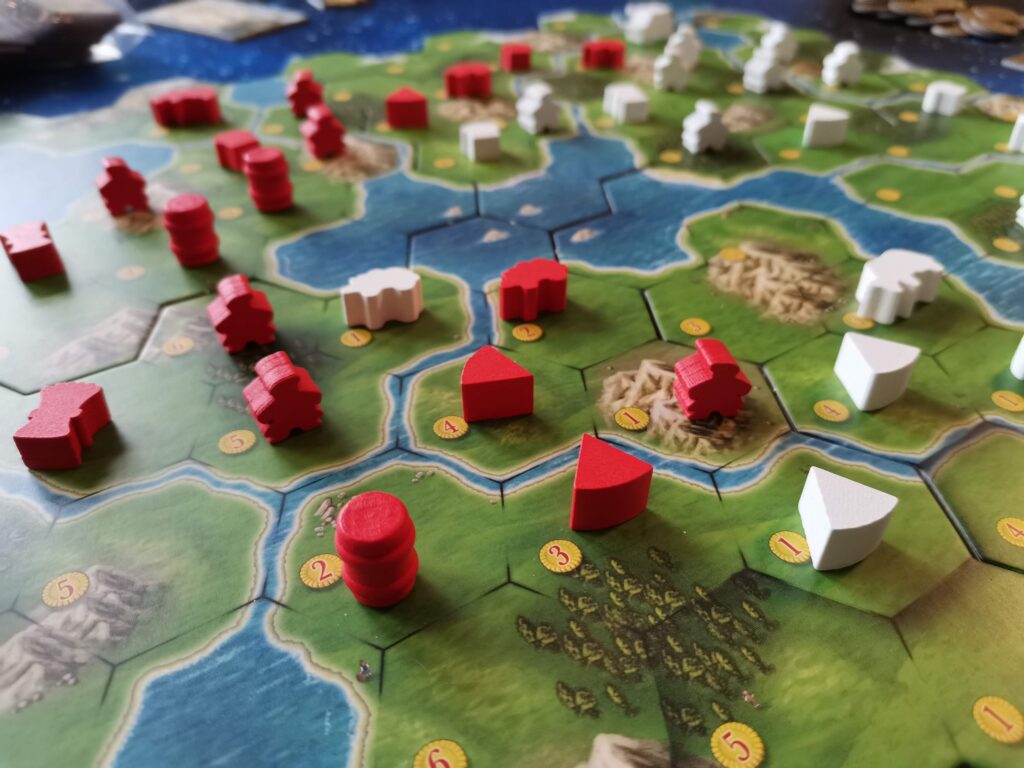
Some actions it carries out are pretty easy, but others feel like a test. I challenge anyone to resolve its Expand action without thinking about it. The same goes with certain market actions, the calculations you have to carry out to see how much money the automa takes, if any, are like school homework. It doesn’t mean the solo mode is bad, far from it, the scoring and interaction is very good. It’s just very high maintenance, and in my experience I spent longer carrying out its turns than my own. It should be the opposite.
Merv
Yep, the same Merv I reviewed and really like. The solo mode is really good, and very tough to beat, but I found myself keeping the rulebook open on the solo rules to work out its choices and placements over and over again. In a game with only 12 turns each, it felt like a lot. I really like the solo mode, but it definitely needs a something to make it smoother.
If you’ve not read the review yet, each turn takes place in a specific order, and as well as moving yourself and the Corrupt Magistrate (your opponent), you also both control a third player, called the High Courtier. It’s like some kind of messy divorce, with you and the Magistrate saying “well this time I’m placing him, you can have your turn next time”. There’s a tricky set of rules of precedence to decide where the automa places his and the High Courtier’s buildings, and I end up checking the rules for it every, single, turn.
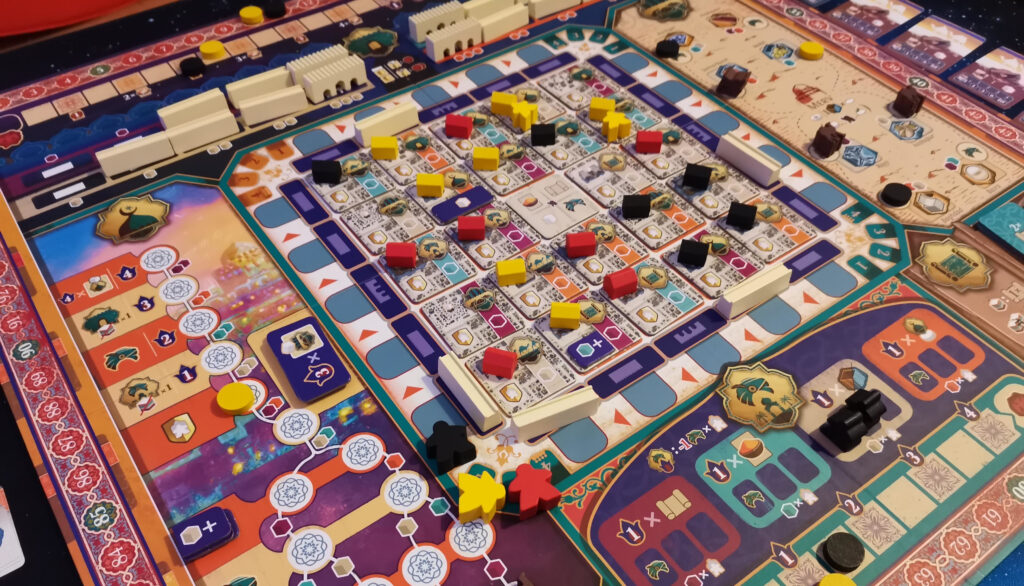
Of course, that might just say more about me than the game, but I think it could really have done with some kind of player aid or reference for it. If there was a good player aid on a board, I don’t know if this game would even have been included here.
Just to reiterate that neither of the games above are bad. Far from it. The solo opponents both play a very good game too but for players new to solo games, the experience could be off-putting compared to something like an Automa Factory game.
Solo gaming – a summary
Hopefully you know a little more about what makes an automa tick now. I can’t begin to understand how people can create them, but I’m extremely grateful that they have. Between these and beat-your-own-score modes, there are a lot of really good solo options out there now which don’t feel like a disappointing compromise.
There’s a growing list of people whose names alone are enough to convince me the solo mode will be worth playing, and it’s already becoming an expectation among the board game community that a solo mode should be in a new game. I’m already seeing complaints in Kickstarter campaigns when big-name games are being funded without a solo mode. Solo mode designers even have their own section on a game’s credits on BGG now.
Some games will never work for solo. Social deduction, auction games, take-that mechanics, party games – there’s a big list where it just isn’t viable. But there’s enough good stuff out there now, and far more on the way, to make solo board gaming an excellent hobby to take up. I’ve seen some people turn their nose up at it, scoff, and ask “what’s the point of a solo board game? It won’t be any good. I can just play a video game“. Yes, you can. I do too. However, a lot of the strategy games that people will spend years of their lives playing on a computer are just running the same branching decisions and algorithms that we’ve got in board games now. But with a board game we have the added bonus of being able to look away from a screen, to play with something tactile, warm, and personal. It’s not a compromise, it’s a choice.
If you have any questions or comments, please just leave a message below, or scroll to the top of the page and find me on social media. I’ll be more than happy to talk to you (exhaustively!) about solo games.







